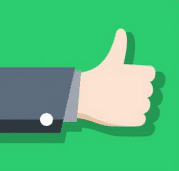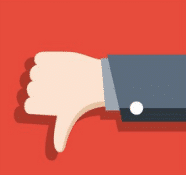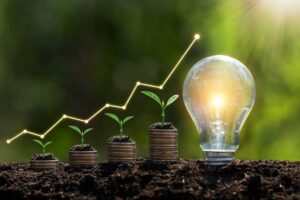Ecodesign: a key profession for companies in the age of ecological transition. By incorporating eco-responsible practices right from the design stage, this expert in sustainable innovation meets the demands of consumers and environmental standards. These are invaluable skills for reducing carbon footprints while boosting competitiveness. So what are the tasks and salary of an eco-designer? And what skills are required to practise this profession of the future? Find the answers in this job description.

A role With their complex and varied remit, eco-designers have to navigate between innovation, regulation, economics and sustainability. Their ambition? To develop products that respect the environment. Within the organisation that employs them, they are a major player in the eco-design process. corporate social responsibility (CSR).
What are the main tasks of an eco-designer?
The eco-designer's tasks can be grouped into three main categories.
1/ Integration and sustainable innovation
The eco-designer integrates sustainability principles into the design process. This means selecting environmentally-friendly materials, optimising resources and constantly innovating.
The eco-designer ensures that every stage in the product's life cycle minimises its ecological impact.
2/ Environmental compliance assessment
Firstly, it carries out rigorous analyses, such as Life Cycle Assessment (LCA), to evaluate the environmental impact of products. These analyses are an essential prerequisite for ensuring compliance with current regulations and standards.
This mission also includes constant monitoring to keep abreast of legislative and technological developments.
3/ Raising awareness and communication
The eco-designer raises awareness and trains internal teams in eco-responsible practices. They must also ensure transparent communication on sustainable design choices. With a view to the circular economy, they work to ensure that products can be recycled and reused.
The eco-designer plays a key role in promoting a sustainable corporate culture, aligned with the company's CSR approach.
The eco-designer in a nutshell :
As the linchpin of sustainability within the company, the eco-designer incorporates ecological principles at every stage of the design process, while constantly innovating. This is their main mission. It involves :
- work with multidisciplinary teams;
- ensure regulatory compliance ;
- implement rigorous environmental assessments.
But eco-design also means optimising costs and resources. To this end, the eco-designer raises awareness and trains colleagues, ensures transparent communication and adapts quickly to technological and legislative developments.
Its crucial role also includes promoting the circular economy, guaranteeing repairable and recyclable products.
Finally, it is one of the key players in the company's CSR approach, in favour of which it takes very concrete action to reduce its environmental impact.
#RSE #DéveloppementDurable #ÉconomieVerte #IndustrieVerte
What training and experience is needed to become an eco-designer?
The job is accessible from a diploma level Bac +3A degree in science and technology, specialising in the environment or design. However, it is better to go for a degree at Bac +5. In particular, a master in eco-designIn addition, you will have a degree in environmental management, engineering, sustainable development, materials science or natural resource management. Visit engineering degrees, specialising in the environment, materials or renewable energiesThese are still highly sought-after by recruiters. Practical experience in project management, life cycle analysis (LCA) or environmental impact assessment is a plus.
What skills does an eco-designer need?
TECHNICAL SKILLS (hard skills)
- In-depth knowledge of sustainable materials, green manufacturing processes and green chemistry
- Knowledge of environmental standards and regulations (possibly with certifications): standards ISO 14001, ISO 26000REACH, RoHS
- Mastery of processes and one or more software packages:
1/ Lifecycle analysis: SimaPro, GaBi, OpenLCA
2/ of computer-aided design (CAD): AutoCAD, SolidWorks, CATIA, Rhino
3/ environmental performance assessment: EnergyPlus, eQUEST for energy simulation
4/ waste and recycling management software (WMS): AMCS, Rubicon
- Demonstrated skills in project management, eco-innovation and design thinking
- Modelling and simulation skills using software such as Ansys, COMSOL Multiphysics and MATLAB
- Technical English
BEHAVIOURAL AND RELATIONAL SKILLS (soft skills)
- Creativity
- Strong collaborative skills and team spirit
- Excellent communication skills: speaking out, persuasiveness
- Sense of ethics
- Strong ability to adapt to technological, regulatory or market-related change
- A taste for continuous learning
How much is an eco-designer paid?
The average salary is 43 000 €. But salary ranges change considerably with experience.
At the start of their career, eco-designers can expect to earn between €30,000 and €40,000 a year. Then from 45,000 to €55,000 gross per year after 5 years' experience. On average, an eco-design manager with more than 10 years' experience earns around €70,000 gross per year. These ranges also vary according to training, sector of activity and type of organisation. Ecodesigners working in cutting-edge industries such as aeronautics can earn more.
What kind of working environment?
Ecodesigners can work in a wide variety of organisations.
We are of course thinking of large-scale companies and theenergy. But in reality, eco-design is a crucial issue that concerns all sectors. Aeronautics and space, plastics, automotive, food, IT, textiles, packaging, construction, public works, etc. Ecodesign engineers are therefore essential to all these sectors. in demand in various industriesThis is the case in the research, environment and industrial marketing departments.
Major companies...
In larger organisations, eco-designers may specialise in specific areas such as waste management, energy efficiency or life cycle analysis. They often work in collaboration with other departments: R&D, production and marketing. This collaboration has the virtue of facilitating the integration of sustainable practices on a wider scale. Another advantage is that they have access to significant resources. They can therefore contribute to large-scale projects. They also benefit from training and professional development opportunities.
Another option is to join a consultancy or engineering firm, where you can work on a variety of projects for a wide range of clients and industries, and develop your own specialised expertise. Ecodesigners can also work as independent consultants.
In the public sector, eco-designers can work on implementing environmental policies, managing local resources and promoting sustainable practices.
... to SMEs
For SMEs and service companies, the aim of employing an eco-designer is to 'green' their image or to obtain a label. In the latter case, the aim is to stand out from the crowd and gain a competitive advantage, particularly when responding to calls for tender. In an SME, an eco-designer also needs to be versatile. They must be able to manage all aspects of sustainable design projects, such as optimising processes, choosing materials and implementing eco-responsible practices at all levels of the company. In these dynamic working environments, proximity to management gives eco-designers opportunities to have a direct impact on decisions.
Job titles vary from one sector to another or depending on the size of the company: ecodesigner, ecodesign engineer, ecodesign or ecodevelopment project manager, ecodesign manager.
What are the future prospects for eco-designers?
Ecodesigners may initially move into positions such as eco-innovation project manager or circular economy project manager, sustainable innovation manager or CSR manager. They may also move into environmental auditing or sustainable development training.
What are the attractions and constraints of this job?

- Exploiting your creative potential on a daily basis
- Positive environmental impact
- Diversified missions
- Numerous opportunities for career development

- Technical and regulatory complexity requiring regular updating of knowledge
- Budgetary pressures and profitability constraints
- Strong resistance to change and organisational inertia
Ultimately, to succeed in this position, the eco-designer must achieve the double feat of being both the company's green asset and its business asset. A thorough knowledge of the issues involved in the ecological transition will help them to defend their projects effectively. The field of eco-design is constantly evolving, with the emergence of new technologies, regulations and practices. The eco-design profession therefore offers many opportunities for learning and professional development, encouraging career advancement.





